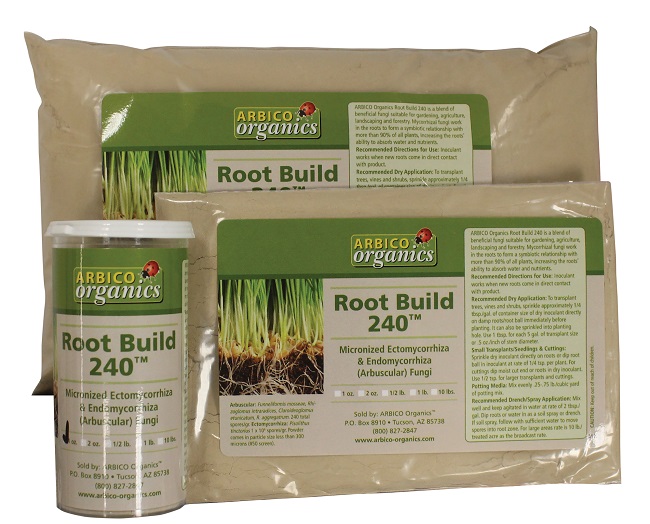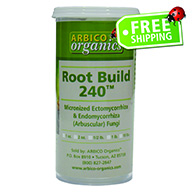
There’s more to growing healthy plants than simply providing your crop with water, light, and carbon dioxide. Healthy, robust yields happen when a plant has all the necessary nutrients. As growers, we often provide these necessary nutrients to a plant through fertilizers. But not all the nutrients in the fertilizers are easily available for the plants to utilize. In healthy soil, mycorrhizae and bacteria assist plants in harnessing available nutrients and moisture. .
Mycorrhizal fungi come in two primary classes: ectomycorrhiza and endomycorrhiza. These two types of mycorrhizae form mutualistic relationships with the majority of all plant life. Around 10% of all plants interact with ectomycorrhiza. Generally, these are woody plants such as birch, oak, and pine trees. You’ll find ectomycorrhiza hard at work in successful tree nurseries. Endomycorrhiza interact with a much wider variety of plants. About 80% of all plants have some type of relationship with endomycorrhiza, and large growers make sure that their soil mediums have a healthy concentration of this beneficial fungus.
What’s the Difference Between Ectomycorrhiza and Endomycorrhiza?
Ectomycorrhiza form relationships with wooden trees. Endomycorrhizal fungi attach to the roots of the majority of standard greenhouse plants. Ectomycorrhizal fungi gather around the plant root, but endomycorrhiza actually penetrate the plant root. Both types of fungi are a crucial component of soil and plant health.
Why are Mycorrhizae Important?
Mycorrhizae aid in creating dense root structures in transplants, which can prevent transplant shock from killing your cuttings. The fungi also facilitate the uptake of phosphate, ammonium, and zinc from the soil. If the appropriate type of mycorrhizae is not present in the soil, these nutrients will remain inert and will not be absorbed by uncoated plant roots. If you are growing in an outdoor setting or managing landscaping, adding mycorrhizae to the soil can increase the general hardiness of plants, making them more resistant to disease, temperature fluctuation, and drought.
How do I Introduce Mycorrhizae to my Greenhouse?

Check out the Root Build 240 by ARBICO Organics. This is a one-product solution to maintaining healthy fungi levels in your soil, as Root Build 240 contains both endo- and ectomycorrhizal fungi. The 240 in the product name isn’t just for show. Root Build 240 has 240 endomycorrhizal spores per gram, which is one of the highest counts in the industry.
Root Build 240 can be applied to a new cutting in dry or liquid form. If applied as a powder to a cutting, sprinkle the inoculant directly onto the roots or rootball. If adding the inoculant directly to the potting soil, evenly mix the powder throughout the soil. When applying as a liquid, you can drip the new roots of a cutting into the mixture, then plant.
ARBICO Organics believes that healthy plants begin at the roots! Support your plant’s growth and strengthen its resistance to stresses when you add mycorrhizal fungi in Root Build 240 to your seeds, seedlings and transplants. For more information on additional ARBICO products, visit their website at ARBICO-Organics.com or request a free product catalog by following this link.
Related Articles & Free Email Newsletter Sign Up
Beneficial Microorganism Overview
Five Ways to Make Help Nature Make Topsoil


Comment here